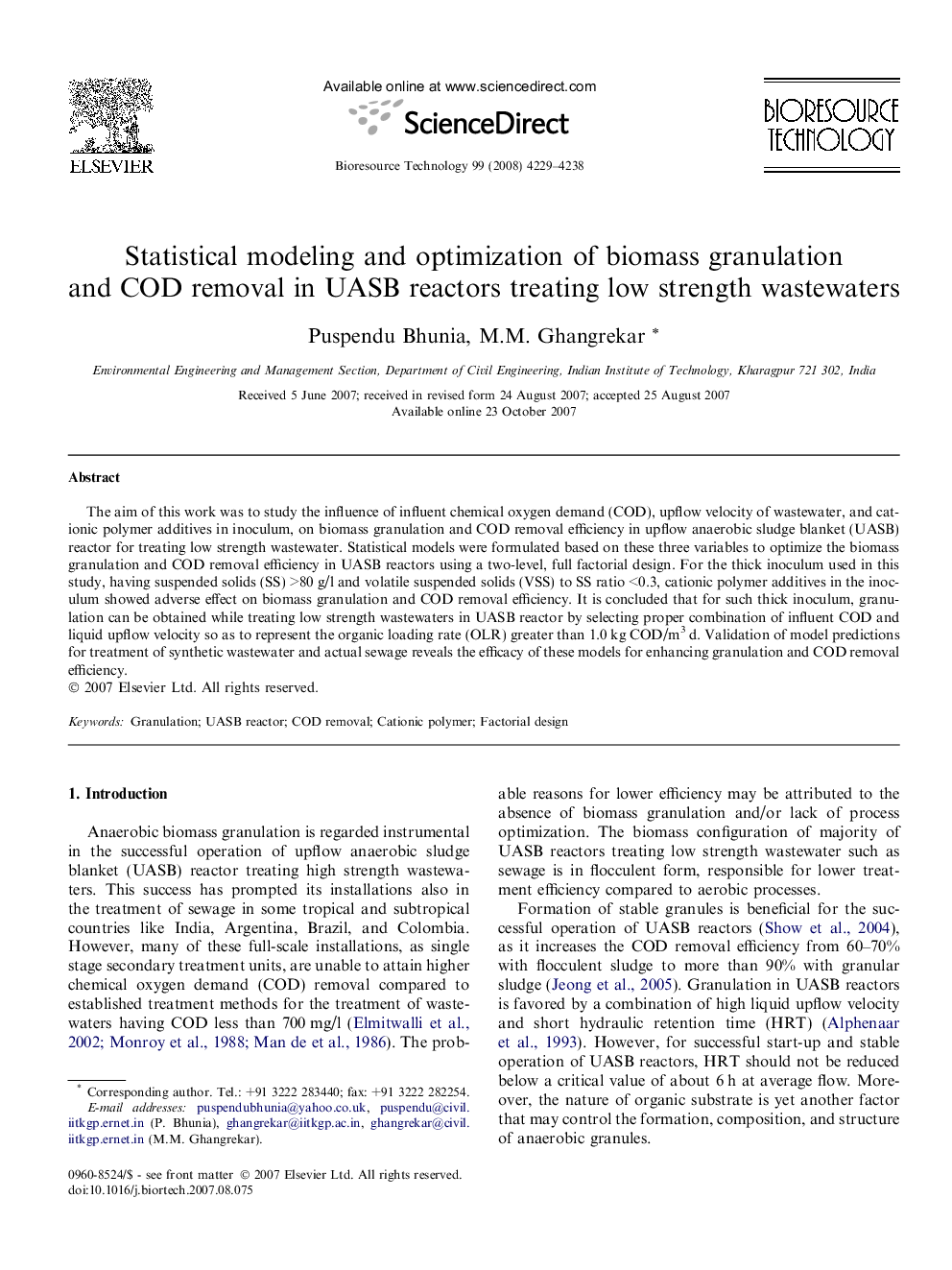| Article ID | Journal | Published Year | Pages | File Type |
|---|---|---|---|---|
| 684367 | Bioresource Technology | 2008 | 10 Pages |
The aim of this work was to study the influence of influent chemical oxygen demand (COD), upflow velocity of wastewater, and cationic polymer additives in inoculum, on biomass granulation and COD removal efficiency in upflow anaerobic sludge blanket (UASB) reactor for treating low strength wastewater. Statistical models were formulated based on these three variables to optimize the biomass granulation and COD removal efficiency in UASB reactors using a two-level, full factorial design. For the thick inoculum used in this study, having suspended solids (SS) >80 g/l and volatile suspended solids (VSS) to SS ratio <0.3, cationic polymer additives in the inoculum showed adverse effect on biomass granulation and COD removal efficiency. It is concluded that for such thick inoculum, granulation can be obtained while treating low strength wastewaters in UASB reactor by selecting proper combination of influent COD and liquid upflow velocity so as to represent the organic loading rate (OLR) greater than 1.0 kg COD/m3 d. Validation of model predictions for treatment of synthetic wastewater and actual sewage reveals the efficacy of these models for enhancing granulation and COD removal efficiency.
